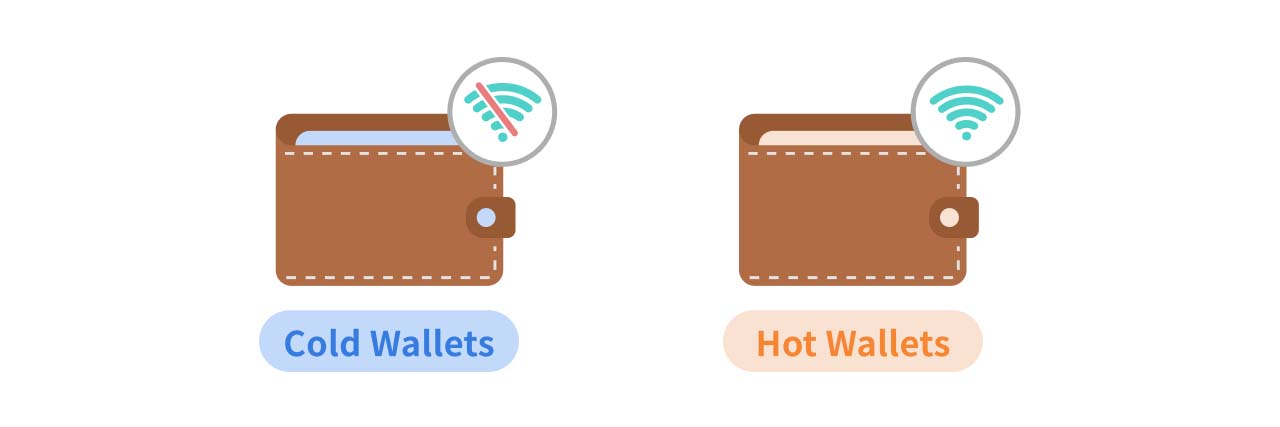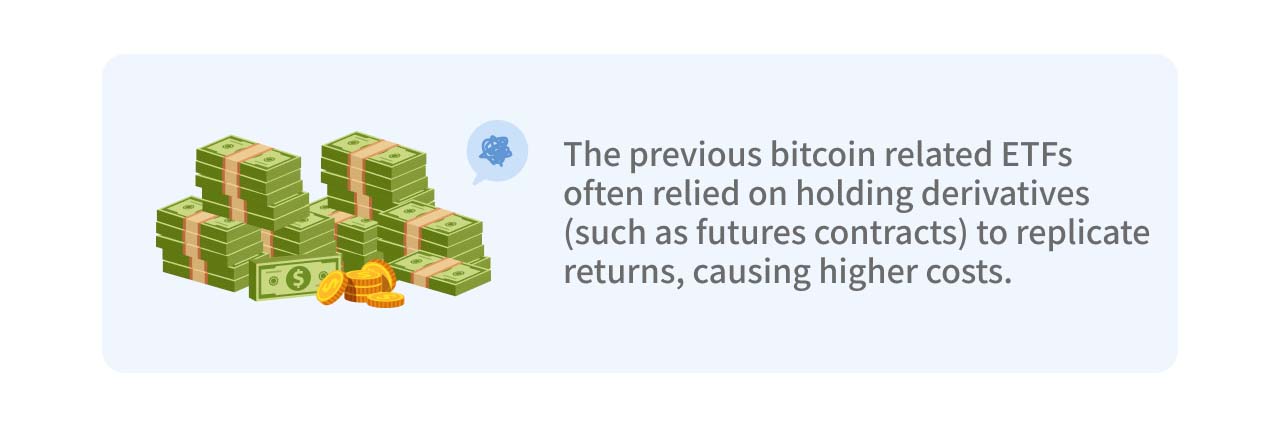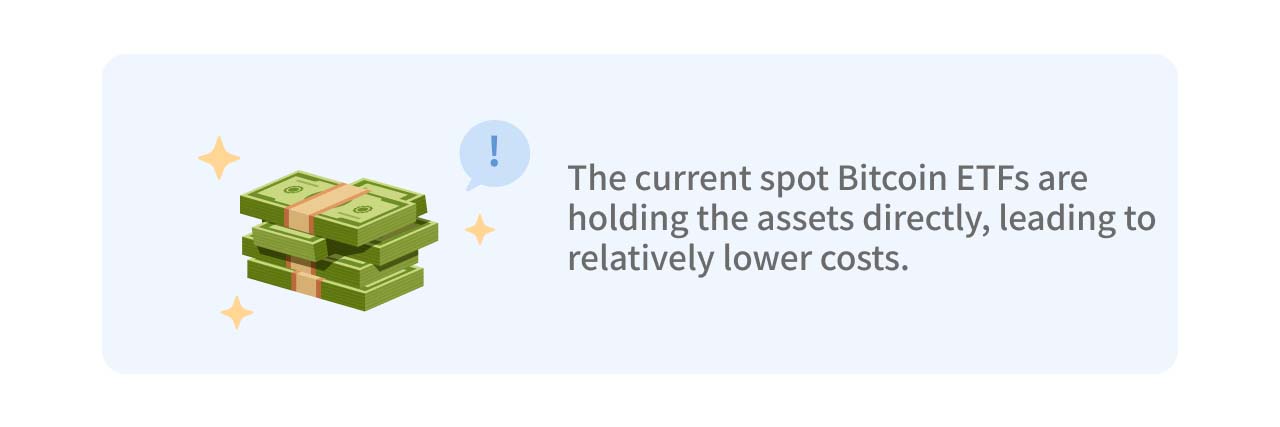The U.S. Securities and Exchange Commission (SEC) has officially approved the listing of spot Bitcoin ETFs, with a total of 11 ETFs now available for trading. Among these, 9 of the newly listed ETFs have attracted around $1.4 billion in net inflows within the first two trading days.
Below we will introduce what Spot Bitcoin ETFs are and the potential market impact of this new approval.
The Development of Bitcoin ETFs
Before the SEC approved spot Bitcoin ETFs, Bitcoin-related ETFs were already available for trading. You may recall ETFs such as ProShares Bitcoin Strategy ETF (BITO) and VanEck Bitcoin Strategy ETF (XBTF), which use futures contracts to replicate returns. These ETFs are actively managed, differing slightly in strategy from the common passive ETFs that track asset prices.
Since 2018, the SEC has rejected over 20 applications for spot Bitcoin ETFs. However, a breakthrough occurred following a lawsuit by Grayscale after their application was denied. The court ruled that the SEC’s justification was insufficient, leading to a review. SEC Chairman Gary Gensler eventually relaxed the restrictions, allowing spot Bitcoin ETFs to be listed. Currently, 11 spot Bitcoin ETFs are actively traded, with issuers including major global index fund providers such as BlackRock’s iShares (IBIT) and Fidelity’s FBTC.
| ETF Name | Ticker |
|---|---|
| Bitwise Bitcoin ETP Trust | BITB |
| ARK 21Shares Bitcoin ETF | ARKB |
| Fidelity Wise Origin Bitcoin Trust | FBTC |
| Wisdomtree Bitcoin Trust | BTCW |
| Invesco Galaxy Bitcoin ETF | BTCO |
| Valkyrie Bitcoin Fund | BRRR |
| iShares Bitcoin Trust | IBIT |
| VanEck Bitcoin Trust | HODL |
| Franklin Bitcoin ETF | EZBC |
| Hashdex Bitcoin ETF | DEFI |
| Grayscale Bitcoin Trust | GBTC |
The Characteristics of Spot ETF
The Nature of Spot ETFs
In general, spot ETFs involve the issuer physically holding the asset they track. By holding the asset, they track its price movements, enabling investors who buy the ETF to receive corresponding returns. Based on this method, spot Bitcoin ETF issuer will also need to buy and hold Bitcoin.

Most ETF issuers currently choose to store their Bitcoin in third-party cryptocurrency exchanges, entrusting custody to firms like Coinbase. The Bitcoin is kept in independent cold wallet accounts, which are only accessed when payments are required.
(Note: A cold wallet is a method of storing cryptocurrency offline, which is safer from hacking attacks compared to a hot wallet, which is connected to the internet.)
Lower Custody Costs

The key difference between previous Bitcoin-related ETFs and the newly established spot ETFs is that the ones before often relied on holding derivatives (such as futures contracts) to replicate returns. As mentioned in our other articles, this type of ETF can incur additional costs, such as the cost of rolling contracts (switching to new futures contracts when the old ones expire).

As a result, the current mainstream spot Bitcoin ETFs are offering relatively lower fees to consumers. For example, iShares IBIT currently has a management fee of 0.13% (expected to increase to 0.25% in the future), which is much lower than the management fee of ProShares BITO (0.95%). The lower costs allows investors to track Bitcoin's price with lower management costs.
Bitcoin ETFs Impact
A Surge in Short-Term Buying Demand
As mentioned earlier, the massive demand for Bitcoin purchases will compel ETF issuers to buy and hold large amounts of Bitcoin. This demand will, in turn, drive buying pressure in the Bitcoin market.
A Precedent for Linking Cryptocurrencies with Traditional Finance
Cryptocurrencies like Bitcoin have long emphasized their decentralized nature. The approval of Bitcoin spot ETFs may signal to the market that cryptocurrencies and traditional finance can integrate to some extent. Many believe that other products, such as spot Ethereum ETFs, may soon receive SEC approval. However, some argue that the listing of such cryptocurrency ETFs could add pressure on regulators.
